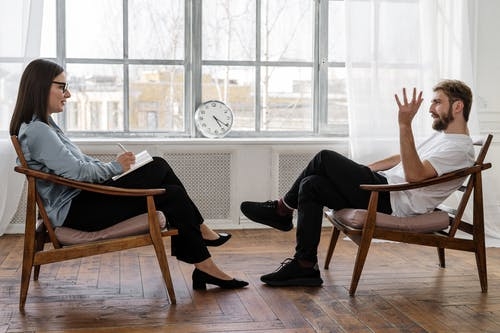
As therapists, my colleagues and I got a lot of calls.
As the pandemic dragged on, and with the roller coaster ride of COVID cases over the long months, people contacted our therapy offices to take care of their mental health.
Still, every person who decided to see a therapist fought against a silent stigma. There was a damaging fallacy that a strong person solved their problems on their own, that only “broken” people needed therapy. But more and more, our society is coming to realize that having struggles in life doesn't make us broken, it makes us human. The silver lining is that COVID helped create a change in the way that our society views therapy.
Here’s how COVID helped change the way we see therapy
1. First of all, therapy became more the norm.
The pandemic brought with it myriad stressors including worries about becoming ill, employment issues, changing childcare responsibilities, social isolation, and loss of usual sources of enjoyment. It’s not surprising that more people sought mental health services! With the increase in life stress, existential anxiety, and other mental health problems, there’s an increased need for therapy. If you saw a therapist then or are seeing one now, you’re helping break the stigma around therapy simply by making therapy more commonplace. And, when you share with others that you’re taking care of your mental health, you’re letting them know that therapy need not be viewed in a negative light—you’re sending the message that “It’s OK to talk to someone.”
2. We are more vulnerable with each other.
Pre-COVID: “How are you?”
“Fine. How are you?”
Post-COVID: “How are you?”
“Honestly, I’ve been feeling so lonely and overwhelmed. You too?”
It’s hard to escape the fact that the pandemic was hard on everyone. We all experienced tremendous fear, loss, and uncertainty. Now, your stories are more likely to be met with understanding and support if you tell others about what you’re going through. Because many people had challenges, there’s an level of acceptance surrounding disclosure of our emotions and life struggles. We are more emotionally open and understanding of hardship in others’ lives, making it safer to be more vulnerable with one another about our deeper feelings. With breaking the stigma around vulnerability comes a greater societal acknowledgment that people can expose their deeper feelings to a therapist without being seen as “weak” or being judged for seeking help.
3. We are seeing the reality that life is hard for all of us.
Because vulnerability is less stigmatized, people are opening up more. It’s easy to feel isolated in your suffering (including experiencing worries, symptoms of depression, etc.) when everyone is afraid to let you in to their inner world and show you that they struggle, too. Nowadays, we are more in touch with a sense of common humanity; the truth is, life is hard for all of us. As the Buddha said, “life is suffering.” It just took a pandemic for us to realize that it’s OK to acknowledge the fact that life is hard and we’re not always “fine.”
There's good news
COVID brought with it lots of bad news. The good news is that therapy can help, and some research suggests that online therapy, the norm in the time of COVID, can be even more effective than in-person therapy. More good news is that because of our growing vulnerability and greater awareness surrounding mental health and therapy, we are learning that it really is OK to not be OK—and that it’s OK to get help. This pandemic helped bring about a mental shift that changed the way we see therapy. When you take care of your mental health, you’re advocating for a support system that can change others’ lives as well.
Submitted by Tasha Seiter, updated 10/2024
------------------------------------------
Tasha Seiter is a therapist in Fort Collins who provides individual, couples, and family therapy. She considers therapy to be an art and a science and has numerous research publications to her credit. Find out more about her practice at Tasha Seiter Therapy.